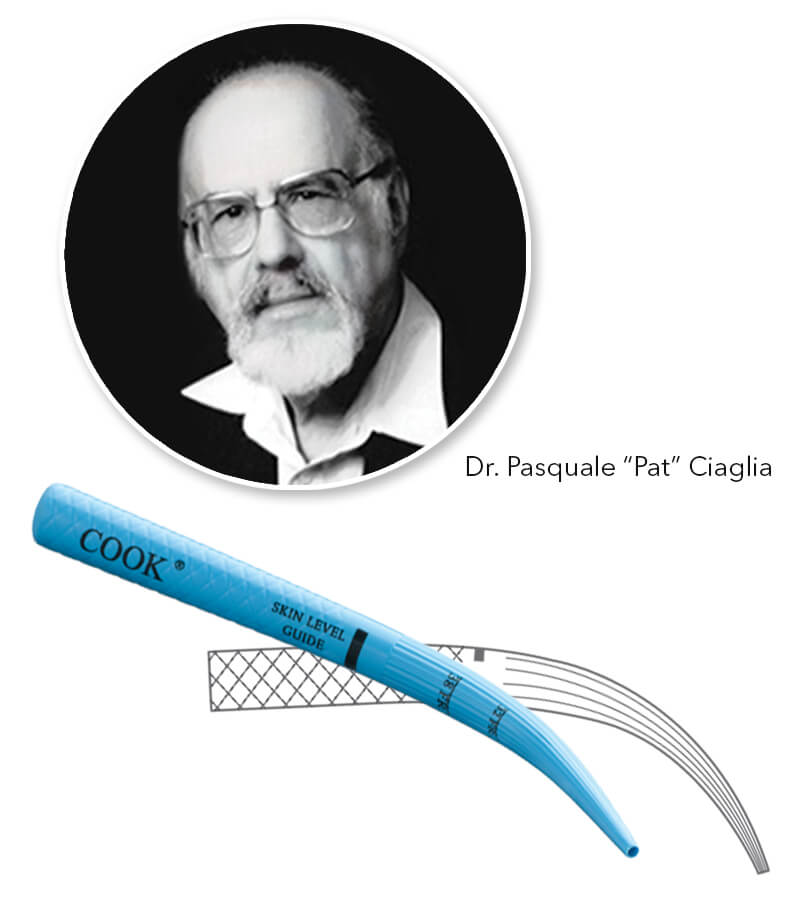History
Revolutionizing percutaneous
tracheostomy for over 30 years
Surgical tracheostomies were performed as early as the 16th century in order to achieve adequate ventilation for patients who suffered from an obstruction of the upper airway or those who needed long-term ventilation.1
Concerned with the potential complications of surgical tracheostomies, Dr. Pasquale “Pat” Ciaglia revolutionized the procedure by partnering with Cook Medical to invent a minimally invasive percutaneous dilation technique. His original serial dilation set, introduced in 1987, evolved into the single dilator approach we know today: the Blue Rhino G2-Multi Percutaneous Tracheostomy Introducer.
Globally, percutaneous dilatational tracheostomy (PDT) has become one of the most commonly performed procedures in the intensive care unit (ICU).2 The single-dilation Ciaglia Blue Rhino technique has become many physicians’ preferred method when performing PDT.3, 4
